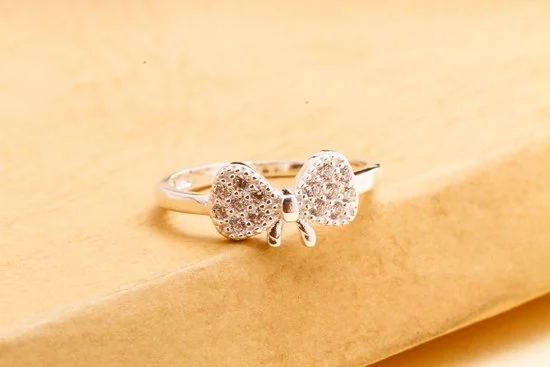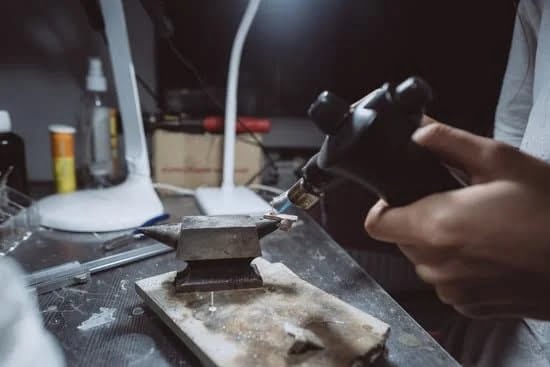Have you ever found yourself immersed in the world of DIY jewelry-making, creating unique and beautiful pieces that reflect your personal style? If so, you’re not alone. The DIY jewelry revolution is gaining momentum, empowering individuals to express their creativity and tap into their earning potential.
But once you’ve crafted these stunning pieces, where can you sell them to a wider audience? In this article, we will explore the various platforms and opportunities available for selling your DIY jewelry, showcasing the endless possibilities that await you.
With the rise of online marketplaces, the options for selling your DIY jewelry have expanded exponentially. These platforms provide a virtual storefront where artisans like yourself can showcase their handmade creations to a global customer base. From Etsy to Handmade at Amazon to Shopify, these online marketplaces open up a world of potential customers who are seeking unique and one-of-a-kind jewelry pieces.
Etsy, in particular, has become a powerhouse for DIY jewelry sales. With its user-friendly interface and dedicated customer base of craft enthusiasts, Etsy provides an ideal platform for reaching buyers who appreciate the artisanal value of handmade items. We will delve deeper into the benefits of selling on Etsy and how you can make the most of its features to maximize your sales potential.
But online marketplaces are just one avenue for selling your DIY jewelry. Local craft fairs and flea markets offer valuable opportunities to connect with your community and engage directly with customers. These events provide a tangible experience where shoppers can see and feel your creations up close while also supporting local artisans. We will discuss how participating in craft fairs and flea markets can help grow your business while building meaningful connections with customers.
In the following sections, we will explore additional avenues such as social media platforms like Instagram and Facebook, collaborations with other artists or stores through consignment or pop-up shops, niche industries and specialty stores that cater to specific audiences, as well as setting up your own online storefront using Shopify. These options provide unique ways to showcase and sell your DIY jewelry, each with its own advantages and audience.
Join us on this journey as we dive into the vast landscape of opportunities for selling DIY jewelry. Find the perfect fit for your creative business and unleash your potential in an industry that celebrates both artistry and entrepreneurship. Let’s embrace the DIY jewelry revolution together.
The Rise of Online Marketplaces – Explore the Endless Possibilities
The rise of online marketplaces has revolutionized the way DIY jewelry creators can sell their unique pieces. These platforms provide endless possibilities for reaching a wide audience, connecting with customers, and growing your business. One such platform is Etsy, which has become a powerhouse for DIY jewelry sales.
Etsy is an online marketplace specifically tailored to handmade, vintage, and craft items. It provides a dedicated space for DIY jewelry makers to showcase and sell their creations to a global customer base. The platform offers various features that make it easy to set up an online shop, including customizable storefronts, inventory management tools, and secure payment processing options.
With millions of active buyers on Etsy, sellers have the opportunity to tap into a large and diverse market. By leveraging the platform’s search algorithms and marketing tools, DIY jewelry makers can increase visibility for their products and attract potential customers. Additionally, Etsy provides resources and support for sellers through its seller handbook, community forums, and educational events.
| Etsy | Features |
|---|---|
| Millions of active buyers | Wide reach |
| Customizable storefronts | Branding opportunities |
| Inventory management tools | Simplified operations |
| Secure payment processing options | Safe transactions |
Another popular online marketplace worth exploring is Handmade at Amazon. Launched in 2015, this platform caters specifically to artisans selling handmade products. With its vast customer base from Amazon’s existing user network, Handmade at Amazon offers DIY jewelry makers a unique opportunity to reach a wider audience and expand their business.
Similar to Etsy, Handmade at Amazon provides features such as customizable storefronts, inventory management tools, and secure payment processing. The platform also offers additional exposure through curated collections and promotional opportunities. By utilizing the power of Amazon’s brand recognition and customer trust, DIY jewelry makers can leverage these features to showcase their creations and drive sales.
Etsy
Etsy has become a go-to marketplace for DIY jewelry enthusiasts looking to sell their unique creations. With over 81 million active buyers, it provides an incredible platform for reaching a large audience of potential customers. In fact, many sellers have found great success on Etsy, turning their hobby into a full-fledged business.
One of the main advantages of selling on Etsy is the targeted audience it attracts. Buyers come to Etsy specifically seeking handmade and vintage items, making it an ideal platform for showcasing your DIY jewelry designs. By setting up a shop on Etsy, you can easily connect with customers who appreciate the time and effort put into creating one-of-a-kind pieces.
Etsy also offers various tools and features to help sellers stand out from the competition. For instance, you can optimize your listings with detailed descriptions, high-quality photos, and tags that accurately describe your jewelry style. Additionally, Etsy’s built-in search algorithm allows buyers to discover your products based on relevant keywords or categories. Utilizing these resources effectively can significantly increase your visibility and drive sales.
Furthermore, Etsy provides a supportive community where sellers can connect with each other and learn from experienced entrepreneurs in the industry. This sense of community fosters networking opportunities and allows for collaboration among like-minded individuals. Additionally, Etsy offers resources such as online courses and tutorials to help sellers improve their skills and grow their businesses.
Unleashing Creativity with Handmade at Amazon – A Potential DIY Jewelry Haven
Handmade at Amazon is a popular online marketplace that provides a potential haven for DIY jewelry makers to unleash their creativity and sell their unique creations. With its vast customer base and reputation for quality handmade products, it offers an excellent platform for artisans to showcase and sell their DIY jewelry.
One of the main advantages of selling on Handmade at Amazon is the exposure to a large audience of customers who appreciate and value handmade products. The marketplace attracts millions of shoppers from around the world who are specifically looking for unique and one-of-a-kind items. This gives DIY jewelry makers the opportunity to reach a wider range of potential customers and expand their business beyond local markets.
In order to start selling on Handmade at Amazon, artisans need to go through an application process to demonstrate that their products meet the marketplace’s criteria for handcrafted items. Once approved, sellers can create their own storefronts where they can showcase their DIY jewelry collections. Handmade at Amazon provides various tools and features to help sellers manage their inventory, pricing, and orders efficiently.
To enhance visibility and attract more customers, sellers can optimize their product listings by using high-quality images, detailed descriptions, relevant keywords, and compelling titles. Additionally, participating in promotions such as Prime Day deals or creating gift guides can also boost sales on Handmade at Amazon.
Shopify
Shopify has emerged as a popular platform for setting up online storefronts and is a great option for DIY jewelry makers looking to establish their own digital presence. With its user-friendly interface, customizable templates, and robust features, Shopify provides the tools and resources needed to create a professional and successful online store.
One of the key advantages of using Shopify is its wide range of design options. The platform offers numerous ready-made templates that can be easily customized to reflect the unique aesthetic and branding of your DIY jewelry business. Whether you prefer a minimalist, modern, or bohemian look, there are plenty of visually appealing themes to choose from. Additionally, Shopify allows for further customization through coding, enabling you to have complete control over the design elements of your online store.
In addition to its visual appeal, Shopify also offers a wealth of features that contribute to the success of your DIY jewelry business. From inventory management tools and flexible shipping options to secure payment gateways and SEO optimization capabilities, Shopify provides everything you need to streamline your operations and enhance customer experience. Furthermore, the platform integrates seamlessly with various social media platforms and marketplaces, allowing you to expand your reach and attract more potential customers.
| Advantages | Features |
|---|---|
| Wide range of customizable templates | Inventory management tools |
| Ease of use with user-friendly interface | Flexible shipping options |
| Integration with social media platforms | Secure payment gateways |
| Affordable pricing plans | SEO optimization capabilities |
Local Craft Fairs and Flea Markets – Connecting with Your Community and Customers
Local craft fairs and flea markets provide DIY jewelry makers with a unique opportunity to connect with their community and customers in a personal and direct way. These events are popular among those seeking unique, handmade items, making them the perfect platform to showcase and sell your DIY jewelry. Here are some key benefits of participating in local craft fairs and flea markets:
- Direct Customer Interaction: One of the biggest advantages of selling at craft fairs and flea markets is the ability to engage directly with your customers. You can have face-to-face conversations, answer questions, receive feedback, and build relationships with potential buyers. This direct interaction allows you to better understand your target audience’s preferences, needs, and tastes, helping you tailor your products to meet their expectations.
- Building Brand Awareness: Participating in local craft fairs and flea markets allows you to raise awareness about your DIY jewelry brand within your community. By having a physical presence at these events, you can create memorable experiences for customers who may not have discovered your brand online or through other channels. This exposure can lead to word-of-mouth referrals and increased visibility for your business.
- Testing New Designs: Craft fairs and flea markets offer an ideal environment for testing new designs or prototypes before mass production or launching them on larger platforms. You can gather valuable feedback from customers about what they like or dislike about certain pieces, helping you refine your products based on real-time market insights.
To make the most of local craft fairs and flea markets, it’s important to plan ahead. Consider designing an eye-catching booth display that reflects your brand aesthetic and attracts attention. Arrange your jewelry in an organized manner, using props or displays that highlight the uniqueness of each piece. Additionally, don’t forget to bring promotional materials like business cards or flyers that include contact information and social media handles to encourage ongoing engagement with potential customers.
Here are some notable local craft fairs and flea markets to consider
- The Renegade Craft Fair: This traveling market showcases the work of independent artisans in major cities across the United States and Europe. It’s known for its focus on modern craft and DIY culture.
- The Brooklyn Flea: Located in New York City, this iconic flea market is known for its curated selection of handmade and vintage items. It attracts a diverse range of shoppers, making it a great platform to gain exposure.
- Art Basel Miami Beach: While primarily an art fair, Art Basel includes a designated area for designers and makers to showcase their creations. With over 70,000 visitors annually, this event offers excellent networking opportunities within the creative community.
Remember to research and inquire about any application processes or fees associated with these events well in advance. Additionally, it’s important to review the specific guidelines and requirements for each craft fair or flea market you’re interested in participating in to ensure that your DIY jewelry aligns with their target audience.
By participating in local craft fairs and flea markets, you can foster meaningful connections with customers, gain valuable feedback, and build brand recognition within your community – all while earning potential sales. So don’t miss out on this fantastic opportunity to showcase your unique DIY jewelry creations.
Social Media Platforms
Social media has become an integral part of our lives, and it is also a powerful tool for promoting and selling DIY jewelry. With platforms such as Instagram and Facebook, you have the opportunity to reach a wider audience, build your brand, connect with customers, and ultimately grow your business. In this section, we will explore how you can effectively utilize social media platforms to amplify your DIY jewelry business.
Building Your Social Media Presence
The first step in harnessing the power of social media for your DIY jewelry business is to establish a strong online presence. Start by creating accounts on popular platforms such as Instagram and Facebook specifically dedicated to your brand. Ensure that your profiles are well-designed, appealing, and reflect the aesthetic of your brand. Use high-quality images and engaging captions to showcase your creations effectively.
Once you have set up your accounts, focus on increasing your followers by promoting your social media handles on other platforms or through word-of-mouth recommendations. Engage with potential customers by responding promptly to comments and messages, encouraging conversations about your products. Regularly posting content that showcases new designs, behind-the-scenes glimpses into your creative process, or even special promotions can help keep followers engaged and interested in what you have to offer.
Using Social Media Marketing Strategies
While having a strong social media presence is essential, it is equally important to implement marketing strategies to maximize the reach of your DIY jewelry business. One effective strategy is utilizing hashtags related to the niche or style of your jewelry when posting on platforms like Instagram. This allows users who are interested in similar styles or themes to discover your posts more easily.
You can also collaborate with influencers or micro-influencers within the DIY or fashion space who align with the aesthetic of your brand. They can help promote and endorse your products through sponsored posts or reviews tailored towards their audience.
Another useful strategy is hosting giveaways or contests exclusively for your social media followers. This not only increases engagement but also encourages people to share your content, thus expanding your reach organically.
Driving Traffic to Your Online Store
While social media platforms are a great way to showcase your products and engage with customers, it is important to drive traffic to your online store where purchases can be made. Include links to your store in your social media profiles and posts, making it easy for potential customers to navigate directly from social media to your online store.
Additionally, utilizing features such as Instagram Shopping or Facebook Shops can enhance the shopping experience by allowing users to browse and purchase products directly from within the app. This seamless integration eliminates any extra steps that may deter potential buyers.
By leveraging the power of social media, you can expand the reach of your DIY jewelry business, connect with a wider audience, and increase sales. However, it is crucial to regularly analyze your social media efforts and adapt strategies based on analytics. Stay up-to-date with platform algorithms and trends to make the most of these platforms’ potential for amplifying your DIY jewelry business.
Collaborations, Consignment, and Pop-up Shops – Unique Opportunities to Showcase and Sell Your DIY Jewelry
Collaborations: Expanding Your Reach and Enhancing Your Brand
Collaborating with other artists, designers, or brands can be a powerful way to showcase your DIY jewelry and reach a wider audience. By teaming up with like-minded individuals or companies, you can create unique and exciting collaborations that not only attract new customers but also elevate your brand image.
When exploring potential collaborations, consider partnering with artists or designers whose aesthetic aligns well with your jewelry style. This can create a cohesive and visually appealing collection that will resonate with both of your audiences. Collaborative projects can take many forms, such as limited edition jewelry pieces, joint photo shoots, or even events where you both showcase your work.
Consignment: Taking Advantage of Established Retail Spaces
Consignment is another option to consider when looking to sell your DIY jewelry. Many local boutiques and specialty stores are open to showcasing handmade products on consignment. This means that instead of purchasing your jewelry upfront, the store will display it in their shop and split the sales revenue with you once the pieces are sold.
Consignment allows you to tap into an established customer base and gain exposure in a physical retail space without the financial commitment of opening your own store. However, it’s important to carefully choose consignment partnerships that align with your brand values and target market. Ensure that the store attracts customers who appreciate handmade products and has a track record of successful consignment agreements.
Pop-up Shops: Creating Temporary Experiences for Lasting Impressions
Pop-up shops have become increasingly popular in recent years as a way for businesses, including DIY jewelry sellers, to create temporary retail experiences. These temporary locations can range from vacant storefronts to mobile setups at events or festivals. Pop-up shops provide a unique opportunity for you to showcase your DIY jewelry in a curated setting while creating an immersive experience for potential customers.
To successfully execute a pop-up shop, consider factors such as location, timing, and visual merchandising. Choose a location that aligns with your target market, whether it’s in a trendy neighborhood or at an event that attracts your ideal customers. Additionally, invest time and effort into creating an attractive display to draw people in and make them want to explore your jewelry further.
By exploring collaborations, consignment opportunities, and pop-up shops, you can tap into unique avenues for showcasing and selling your DIY jewelry. These unconventional methods provide valuable experiences for both you and your customers, creating memorable interactions that can lead to long-term brand loyalty and increased sales.
Niche Industries and Specialty Stores – Captivating the Hearts of Targeted Audiences
One of the key strategies for successfully selling DIY jewelry is to tap into niche industries and specialty stores that cater to specific target audiences. These markets provide an opportunity for DIY jewelry makers to connect with customers who have a deep interest in their craft or a specific theme. By understanding the unique needs and preferences of these audiences, sellers can create and market their jewelry accordingly, leading to higher sales and customer satisfaction.
For example, consider targeting industries like yoga, wellness, or meditation. Many individuals involved in these practices value handmade products that are ethically sourced and reflect their personal journey towards mindfulness.
Crafting jewelry with natural gemstones, calming colors, or symbols associated with these practices can resonate deeply with this audience. By reaching out to specialty stores catering to the yoga community or wellness retreats that promote mindful living, you can capture the attention of potential buyers who align with your brand’s ethos.
Another niche industry worth exploring is bridal accessories. Traditional weddings often call for unique and personalized accessories that complement a bride’s gown and overall aesthetic. Offering custom-made or one-of-a-kind pieces that brides cannot find elsewhere can be highly appealing. Partnering with wedding planners or boutiques specializing in bridal wear can expose your DIY jewelry to an audience actively seeking unique accessories for their special day.
Additionally, consider targeting specialty stores focused on eco-friendly fashion or sustainable lifestyles. Consumers today are increasingly conscious of the environment and seek products that align with their values. As a DIY jeweler, you have the flexibility to use recycled materials, ethically sourced gemstones, or incorporate elements like upcycled leather or wood into your designs. Partnering with eco-focused boutiques or participating in sustainable fashion events allows you to showcase your dedication to creating environmentally friendly jewelry.
Conclusion
In conclusion, the world of DIY jewelry offers endless possibilities for creative individuals to not only showcase their talents but also make a profit from their craft. With so many avenues available, it is important to find your perfect fit in order to maximize success.
Online marketplaces such as Etsy and Handmade at Amazon have revolutionized the way DIY jewelry is sold, providing a platform for artisans to reach a global audience. These platforms offer convenience and accessibility, allowing sellers to set up shop with ease and connect with customers from all over the world.
For those looking for more control over their brand and storefront, setting up an online store using platforms like Shopify can be a great option. This allows DIY jewelry makers to create a unique online shopping experience tailored to their brand and attract customers in a personalized way.
In addition to online options, local craft fairs and flea markets provide an opportunity for artisans to connect with their community and engage face-to-face with potential customers. These events not only allow for sales but also enable artisans to build relationships and gather valuable feedback on their products.
Social media platforms like Instagram and Facebook are powerful tools that can help amplify the reach of a DIY jewelry business. Utilizing these platforms effectively through engaging content, targeted advertisements, and collaborations can greatly increase visibility and drive sales.
Furthermore, exploring niche industries and specialty stores can open doors to new opportunities in selling DIY jewelry. By targeting specific audiences or partnering with complementary businesses, artisans can tap into markets that align closely with their unique style or materials.
Frequently Asked Questions
What DIY jewelry sells the most?
The DIY jewelry that sells the most can vary depending on current trends and consumer preferences. However, certain types of DIY jewelry tend to have more consistent popularity. Personalized and customizable pieces, such as initial necklaces or birthstone bracelets, are often in high demand as they allow customers to create unique accessories that hold special meanings for them.
Additionally, minimalist and dainty designs have gained popularity due to their versatility and ability to be stacked or layered with other pieces. In summary, while there is no definitive answer to what DIY jewelry sells the most, incorporating personalization and following current trends can increase your chances of success.
How much should I sell my DIY jewelry for?
Determining the right price for your DIY jewelry requires considering several factors. Firstly, you should consider the cost of materials used in creating the piece. This includes not just the beads or metal components but also any clasps, chains, or findings needed. Next, factor in the time it took you to make the jewelry and determine an hourly rate for your labor.
Consider any additional expenses like packaging or marketing costs as well. Finally, research similar products in the market to get an idea of their price range and how much customers are willing to pay for similar items. By analyzing these aspects, you can set a fair and competitive price point that allows you to cover your costs while remaining attractive to potential buyers.
Can you make money selling homemade jewelry?
Yes, it is possible to make money selling homemade jewelry! However, achieving profitability in this business will depend on various factors such as product quality, pricing strategy, marketing efforts, and market demand. Creating unique and well-crafted pieces that stand out from mass-produced alternatives is crucial for attracting customers who appreciate handmade jewelry’s charm and individuality.
It’s important to establish a strong online presence through platforms like Etsy or social media channels where you can showcase your products effectively and engage with potential buyers directly. Consistently promoting your work through targeted marketing campaigns or collaborations with influencers can help increase your reach and drive sales. By actively managing these elements and continually improving your craftsmanship, you can increase your chances of making a sustainable income from selling homemade jewelry.

Welcome to my jewelry blog! My name is Sarah and I am the owner of this blog.
I love making jewelry and sharing my creations with others.
So whether you’re someone who loves wearing jewelry yourself or simply enjoys learning about it, be sure to check out my blog for insightful posts on everything related to this exciting topic!





